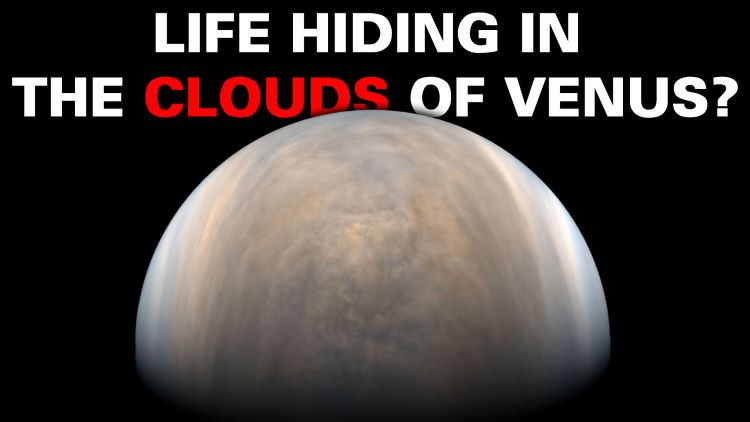A recent study published in Astrobiology investigates the potential habitability in the clouds of Venus, specifically how amino acids, which are the building blocks of life, could survive in the sulfuric acid-rich upper atmosphere of Venus. This comes as the potential for life in Venus’ clouds has become a focal point of contention within the astrobiology community in the last few years. On Earth, concentrated sulfuric acid is known for its corrosivity towards metals and rocks and for absorbing water vapor. In Venus’ upper atmosphere, it forms from solar radiation interacting with sulfur dioxide, water vapor, and carbon dioxide.
Here, Universe Today discusses this new research with Dr. Sara Seager, who is a professor of physics at the Massachusetts Institute of Technology (MIT) and a co-author on the study, regarding the motivation behind the study, how it builds off previous studies, and what this could mean regarding the search for life in the clouds of Venus. Therefore, what is the motivation behind this recent research?
“We are pushing forward the decades-old speculative idea that there might be some kind of microbial-type life in the clouds of Venus,” Dr. Seager tells Universe Today. “The surface of Venus is too hot for life, but just like on Earth as one climbs a mountain or goes up in an airplane, the temperature gets colder and colder above the surface. In the Venus clouds 50 km above the surface the temperature is just right for life. However, the clouds of Venus are not made of water as Earth clouds are, but sulfuric acid is a highly destructive and toxic chemical. The motivation is to explore whether or not sulfuric acid can support complex molecules needed for life.”
For the study, the researchers examined 20 biogenic amino acids within sulfuric acid concentrations that mirrored Venusian atmospheric conditions. After four weeks, the researchers discovered that 11 of the 20 biogenic amino acids didn’t react—or exhibited stability—to the sulfuric acid concentrations while the eight amino acids exhibited stability in the sulfuric acid concentrations after experiencing alteration, and one experiencing instability after alteration. This alteration specifically pertained to the amino acid’s side chain, which is the part of the amino acid that contains each amino acid’s distinctive chemical characteristics, or its uniqueness compared to other amino acids. Along with demonstrating that amino acids remain stable in sulfuric acid concentrations, the study notes how this research “…also informs the possible origins of life on Venus, if life exists there.”
While this study focuses on the ability of amino acids to survive in sulfuric acid, a June 2023 study, which Dr. Seager was lead author, investigated if nucleic acid bases could survive in concentrated sulfuric acid, and whose findings also produced positive results, as well. So, how does this most recent study build off the June 2023 study?
“We can broadly say that biochemistry of life on Earth is composed of four different categories of compounds: nucleic acid bases, amino acids, fatty acids, and carbohydrates,” Dr. Seager tells Universe Today. “Carbohydrates are not stable, but we are working through all the others. This work relates to the June 2023 study as a continuation of working through different classes of molecules. You’ll be hearing more as we make further progress.”
In addition to the June 2023 study, this recent study comes as discussions about the potential for life in the clouds of Venus continue to gain traction, including a myriad of studies between 2020 and 2021 being published in Astrobiology outlining the potential for habitable conditions for life within Venus’ clouds. These studies included using models to determine how life could be possible, the potential presence of phosphorus within the clouds, and a potential instrument package that could be used to sample aerosols within Venus’ clouds to detect potential biogenic markers.
One such future mission that Dr. Seager mentions to Universe Today is Rocket Lab’s First Private Mission to Venus, which was outlined in a 2022 study published in Instrumentation and Methods for Astrophysics and which Dr. Seager tells Universe Today has a current scheduled launch date of January 2025. The mission is slated to use Rocket Lab’s configurable Photon spacecraft that will be fitted with a small, 1-kg (2.2-lb) scientific instrument whose purpose is to shine a laser into the clouds of Venus with the goal of literally lighting up potential organic molecules that might be present. But with all these studies and planned missions, will we ever find life in the clouds of Venus, and in what form?
“If there is life it is most likely simple, single-celled life,” Dr. Seager tells Universe Today. “If we can continue to send space missions to probe the Venus atmosphere directly, we can make progress in answering this question.”
What further discoveries will researchers make about the potential for life in the clouds of Venus in the coming years and decades? Only time will tell, and this is why we science!
As always, keep doing science & keep looking up!

